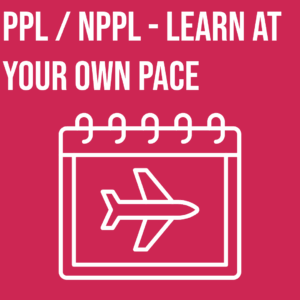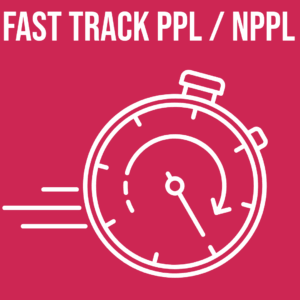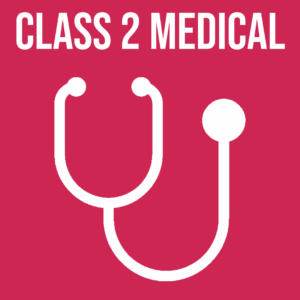Pilot Licence Information
Pilot Licence Information:
If you are looking to get a pilot licence to fly recreationally, we offer a fast-track course for the NPPL (A) and PPL (A).
You can also earn additional ratings with us, and renew or revalidate existing licences and ratings.
If you are looking to fly commercially, we have a fast-track course to prepare you for joining a Commercial Pilot Licence (CPL) course, called “Zero to CPL Ready”, which is open to complete beginners.
Click on a licence type below for more information and to book online, or read on for more general information on pilot licences.
Both the National Private Pilot Licence (NPPL) and the Private Pilot Licence (PPL) can be pursued from the age of 17. However, you can start logging hours from the age of 14, and can fly solo at 16. Both licences allow the holder to fly in the UK and, subject to local rules, in parts of Europe for pleasure.
Note: Flight hours logged towards an NPPL cannot be used towards a PPL. For example, if you start training towards an NPPL and then decide after 20 hours that you want a PPL, these 20 hours will not count. This can be a very expensive mistake. While it is possible to transfer once a licence has been issued, this is time-consuming and costly.
We also have dedicated pages for each licence type where you can get more information.
PPL and NPPL Compared
NPPL | PPL | |
Fly any single engine piston plane (non commercial operations) |  2000kg weight limit | |
Medical can be certified by GP |  | |
Can be the basis for a CPL |  | |
Can be used in the EU |  | |
Can be used in non-EU states |  | |
Can add night rating |  |  |
Can add aerobatic rating |  |  |
Can add other ratings |  | |
Can fly passengers |  Up to three |  |
The NPPL is designed for recreational pilots who have no intention of flying commercially. It does not allow the addition of advanced ratings such as an instrument rating or multi-engine rating, and it cannot be used as the basis for a commercial licence. However, night and aerobatic ratings can be added to an NPPL, allowing the holder to fly at night and perform aerobatics with the appropriate training.
The NPPL requires a minimum of 32 hours of training, compared to the 40 hours required for the PPL. It is also simpler to maintain. A PPL requires 12 hours to be flown in the 12 months preceding the expiry of the Single Engine Piston (SEP) rating. The NPPL, by contrast, is single-engine only, making revalidation simpler: as long as the holder has flown 12 hours in a rolling 12-month period, the licence remains valid.
If your goal is purely recreational flying and taking friends up, the NPPL is recommended. It is easier and cheaper to obtain and maintain. The PPL is ideal if you think you may want to take your flying further in the future.
Licensing guidance can be found on the CAA website.
How to Get a Pilot Licence
Summary of Pre-Requisites:
-
Meet the medical requirements.
-
Pass all 9 theoretical knowledge examinations.
-
Pass the Radio Telephony practical examination.
-
Complete the minimum required flying hours for your licence type.
-
Complete a Qualifying Cross-Country flight.
-
Pass the Skills Test.
Medical Requirements
The NPPL has lower medical requirements than the PPL.
-
A PPL requires at least a Class 2 Medical Certificate, issued by a specialist Aero Medical Examiner.
-
An NPPL requires only a Pilot Medical Declaration (PMD) or, in some cases, a LAPL-equivalent medical, which is broadly aligned with DVLA Group 2 standards. This can often be signed off by your GP, making it simpler and cheaper.
Your pilot licence itself does not expire, but it is not valid without a current medical, which must be periodically renewed.
More details can be found on the CAA Medical Requirements page.
Theoretical Exams
Passing the theoretical exams is a pre-requisite for both the NPPL and the PPL. There are nine multiple-choice exams to complete.
At Almat Flying Academy, all exams can be taken in-house with our examiner. Our theory school offers 1-to-1 training, supported by online study materials and textbooks.
Practical Experience
Flying lessons provide the hours of flight experience required before taking a Skills Test. Beginners can try a trial lesson or a pilot experience day with us before committing.
To take regular lessons, you will need to become a member to enjoy the benefits of membership.
Skills Tests & SEP Ratings
To hold a valid pilot licence, you will also need a Flight Radiotelephony Operator’s Licence (FRTOL), which is applied for alongside your pilot licence. To obtain it, you must pass the communications theory exam and a practical RTF test.
Once the minimum flying hours are completed and you reach the required standard, you can take your Skills Test.
-
NPPL holders must keep their licence current by meeting recent experience requirements.
-
PPL holders must periodically renew or revalidate their SEP rating.
Making a Pilot Licence Application
When you have met the requirements, you can apply to the Civil Aviation Authority (CAA) for the issue of your licence.
Applications can now be made online, which is faster than the historic paper method. You will need:
-
Course completion certificate (including theory exam records).
-
Certified copy of your logbook.
-
Certified copy of your medical certificate.
-
Completed CAA online or paper forms.
Almat Flying Academy staff can certify your documents.
A CAA fee is payable (see CAA Scheme of Charges). The CAA aims to process applications within 10 working days, though it can take longer.
Pilot Licence FAQ:
How Long Does it Take?
It is possible to obtain a licence within weeks, though most students take about 12 months. The average is 45–60 flying hours. Intensive training (full-time over 4–6 weeks, weather permitting) may reduce the hours needed.
For part-time students:
-
2 lessons per week = ~4–6 months.
-
1 lesson per week = ~9–10 months.
This more relaxed pace also allows ample time for theoretical study.
Cost of a Pilot Licence:
See our [Learn to Fly Guide] for budgeting information.
Equipment and Other Costs:
-
Student headsets are available to borrow.
-
A logbook (£25–35) and aeronautical chart of Southern England will be required.
-
For navigation: a CRP-1 flight computer, plotting ruler, and pencils (£45–50).
Can I Use My Licence Abroad?
Yes, with a PPL. We occasionally organise trips to France, the Channel Islands, Ireland, and more. With the right paperwork, you can even obtain an FAA licence based on your PPL, allowing you to fly in the USA.
Can I Fly at Night?
Yes. Once you have obtained a Night Rating (5 hours of dual instruction and solo night flying), you can fly as Pilot in Command during the hours of darkness with a PPL, or with an NPPL if endorsed.





